If you want to play fair in Legacy, Wasteland is the one of the best cards you can buy per win it generates.
The impact it has on an average game is greater than any other card under $100 except for maybe Force of Will. It has the ability to win games against low land-count multicolored decks on the spot. It buys crucial turns against control and combo. It also has real upside against monocolored decks.
The best part of Wasteland is that it doesn’t commit you to a color. That part is left as an exercise to the reader. Today, dear reader, we are going to make a series of black decks. Our desired endpoints are three-color black tempo and midrange decks:
Creatures (14)
Planeswalkers (1)
Lands (20)
Spells (25)

Creatures (15)
Lands (20)
Spells (25)

Creatures (15)
Planeswalkers (4)
Lands (24)
Spells (17)

The above decks are all pretty expensive, so this will take a bit longer than other paths. The major upside to this angle is that your Modern collection—should you have one—will come into play in a big way. Dark Confidant is currently a $51 card as of StarCityGames.com’s Holiday Sale, but if you happen to own four, you can save yourself a month of money spent. Things speed up even more if you own a playset of Tarmogoyfs. You get the picture.
For starters, though, we’re going to stick to a nuts-and-bolts Mono-Black Aggro approach. We’re playing Legacy, so we want to be able to compete with degenerate strategies. Our first focus therefore will be on price-sensitive high-impact disruption and a low curve of threats that can effectively attack through current tempo and midrange decks.
Let’s first talk about where I got this idea from so you can understand the philosophy. In 2007, the worst Legacy Grand Prix ever was held in Columbus. The card Flash was legal and had just been errataed—basically, its rules text had functionally changed as a result of an announcement by Wizards of the Coast. Consequently, the following combo deck was well known more than a month in advance of the tournament:

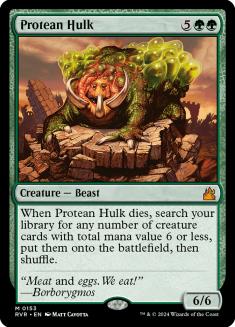
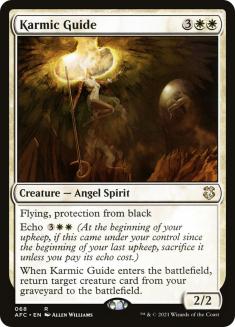
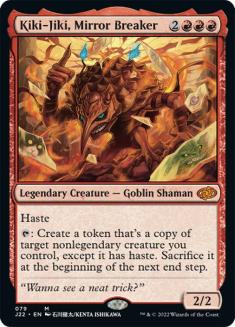
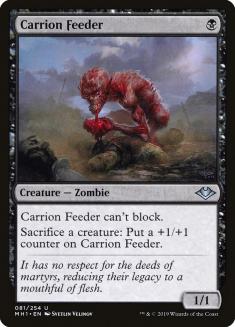
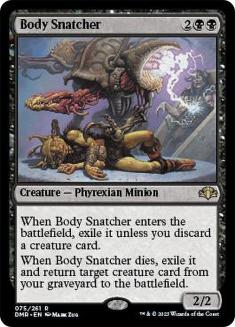
The functionality of the deck was to cast Flash, put a Protean Hulk into play, fail to pay Flash’s additional cost, and trigger Hulk. From there you ended up comboing out in a manner not unlike Splinter Twin but with even more layers of protection.
The deck also happened to have Mystical Tutor as a legal four-of. No, it wasn’t fair at all.
What consistently tickles me pink is that seven copies of Order of the Ebon Hand made the Top 8 of that tournament. Two decks playing actual black pump knights made it to the top of the Swiss. Here is the cleaner of the two lists:
Creatures (16)
Lands (20)
Spells (24)
Sideboard

This decklist is nowhere close to playable in today’s Legacy metagame. In fairness, Thoughtseize and Tarmogoyf didn’t exist yet, so there’s a lot of ground to cover.
The core philosophies of the deck are clear: play Dark Ritual, cheap threats equipped with Umezawa’s Jitte, and incredible disruption. Keep the opponent off balance until they’re dead.
Note that this deck plays no hard removal. When you’re attacking a format with a turn 2 combo deck, you can’t afford to have Snuff Out or whatever rotting in your hand. As you can imagine, we live in a different world—one without Mystical Tutor or Flash but with plenty of Tarmogoyfs. The above deck is a good model, but we’ll need to adapt the list a lot.
The core of the deck is the following:
16 Swamp – For now, we can’t afford fetch lands, so let’s focus on casting our spells and denying opponents the ability to cast theirs.
4 Wasteland – The best card in the deck.
4 Dark Ritual – A major part of the mana base. When you have a black deck that has both creatures and disruption that want to see play early in the game, Dark Ritual is worth considering.
4 Duress – Just some good clean fun. It’s really hard for this to completely miss, but we do want to replace it with Thoughtseize before too long.
4 Hymn to Tourach – On the other hand, we’re never ever cutting this. You will play four of this card in every iteration of this deck, so find four copies with art that you like. You’re going to spend a lot of time looking at these.
The other 28 cards are entirely negotiable. For starters, though, we’re going to stick to the Zombies theme that Bill has going. Our first look:
Creatures (18)
Lands (20)
Spells (22)

We have a curve that Jay Schneider would love: a dozen two-power one-drops, eight glorified Goblin Pikers, two dragons, and a ton of cheap noncreature action. We have sixteen Zombies, which is the number that most Standard decks played when Gravecrawler was around:
Creatures (22)
- 2 Reassembling Skeleton
- 4 Diregraf Ghoul
- 1 Olivia Voldaren
- 3 Bloodline Keeper
- 4 Gravecrawler
- 4 Geralf's Messenger
- 4 Highborn Ghoul
Lands (23)
Spells (15)

Since this is Legacy, though, we’re benching Geralf’s Messenger—it’s simply too expensive for what we want an attacking creature to do. We would rather play Carnophage and Sarcomancy—both of them 2/2s for one—than a 3/2 for three.
Instead of Order of the Ebon Hand, Blood Scrivener is going to let us play a slightly longer game. Make no mistake—we’d rather have Dark Confidant. In the absence of a $200 playset of Bobs, though, Blood Scrivener will do just fine. For as long as we have Gravecrawler, we’ll want to keep a critical mass of Zombies in the deck. Blood Scrivener is an important part of that.
Nantuko Shade is one of the original reasons to play a mono-black aggressive deck. While it is a fairly blunt instrument, it attacks for two and uses any excess mana you ever have.
Tombstalker is this deck’s late-game insurance policy. In protracted games of heavy attrition, you want a card that you can draw, cast, and use to kill your opponent by itself. Tombstalker has very slight disynergy with Gravecrawler, but that drawback is worth bearing. When the average card in your deck is a 2/2 for one, you need to get a lot of value out of each of your cards.
Umezawa’s Jitte is the card that makes a lot of your other creatures playable. It lets your 2/2s fight Tarmogoyfs; it clears out their side of the board; and it gains life in a deck with Sarcomancy, Blood Scrivener, Carnophage, and Snuff Out. It’s possible that you want a third copy, but try the deck out with two. When you’re on a tight budget, the last thing you want to do is drop $20 on something you end up cutting from your very first deck.
Snuff Out is the deck’s go-to removal spell for as long as it doesn’t have Dark Confidant. Once you have Dark Confidant, you’ll probably want to play with a variety of hard and soft removal spells. At some point, after all, you can’t play a four-drop that also costs four life to cast in your Dark Confidant deck. Tombstalker is one thing—it wins you the game on its own, so it’s worth eight life—but Snuff Out is not worth eight life.
Let’s price out the deck:
4 Wasteland: $240
4 Gravecrawler: $12
4 Sarcomancy: $8
4 Carnophage: $2
4 Blood Scrivener: $2
4 Nantuko Shade: $5
4 Duress: $1
4 Hymn to Tourach: $6
4 Dark Ritual: $2
4 Snuff Out: $2
2 Tombstalker: $5
2 Umezawa’s Jitte: $40
This deck comes in at $330, well below the budget of $400 + $150-200/month that I set in the first article. Once you abandon Zombies as a game plan, you’re only out $25 in Zombie-specific cards, so it’s not a huge deal to move away from the theme. In no particular order, look to pick up the following cards when you can afford them:
Dark Confidant – This can replace either two-drop and should enter the deck when you can afford to move away from the Zombie theme. At the time of this article’s writing, there are 28 MP Ravnica Dark Confidants marked at $51 for the Holiday Sale.
Liliana of the Veil – This is another powerful card that should come in when you’re ready to move away from one-drops. As of right now, Liliana’s Holiday Sale price is $38.24 with 36 SP copies remaining. Either one would be a prudent pickup right now, as neither will ever be a bad card to put in a black aggro or midrange deck.
Thoughtseize – Upgrade those Duresses. Get them while they’re in Standard because they’ll only go up after rotation.
Black fetch lands – These will power up Tombstalker, turn on Deathrite Shaman, trigger Bloodghast, and find Bayou (and whatever other duals you may play). They’re not hugely important, but pick them up when you can.
Bayou – Every black Hymn to Tourach deck eventually touches on green, even if only for Tarmogoyf and Abrupt Decay. The original Bayou deck in Legacy was created by one of my early mentors, Dan Signorini:
Creatures (16)
Lands (21)
Spells (23)
Sideboard

While there are a number of reasons why this deck isn’t up to date (Deathrite Shaman, anyone?), the model of huge yet inexpensive creatures and plentiful disruption is a winning strategy in Legacy.
Work your way toward something like this:
Creatures (15)
Planeswalkers (4)
Lands (22)
Spells (19)

As you can see, we’re moving toward a fully functional B/G Midrange deck. The Zombies have shambled away, leaving behind Modern staples Deathrite Shaman, Dark Confidant, and Liliana of the Veil. What did these upgrades cost us?
3 Bayou: $300
4 Dark Confidant: $200
4 Liliana of the Veil: $155
4 Verdant Catacombs: $140
4 Marsh Flats: $120
4 Thoughtseize: $120
4 Deathrite Shaman: $45
4 Abrupt Decay: $25
1 Maelstrom Pulse: $7
1 Tombstalker: $2.50
These changes represent around $1000 in purchases. There is however some significant good news for those of you wondering how you’ll ever afford this.
First of all, everything except for the Bayous can be found in Modern players’ collections. You can get close to equal value on those cards when trading away Standard staples. These cards—Deathrite Shaman, Thoughtseize, Dark Confidant, Liliana of the Veil, and fetch lands—are not terribly hard to find. They cost real money to be sure, but you aren’t going to get raked on value like you will if you try trading from Standard staples to Legacy cards.
Second, these cards can persistently upgrade your deck. You aren’t playing the same deck from week to week—there are direct swaps that you can make as you get these cards that will improve your deck. Instead of the sharp right turns that you saw in the Lion’s Eye Diamond article, your options for customization here are way better.
Third, you actively want to own all of these cards. There’s no dead weight. That’s a big darn deal. This avenue of Legacy collection building allows you to keep very close to 100% of your lifetime purchasing power in the deck that you play. Contrast that with a combo deck, where you’re either playing your Ichorids or your Infernal Tutors, your Bridge from Belows or your Burning Wishes.
I suggest the following purchasing path:
With the remaining $70 from the initial deck and the $150-200 you budget for month 1, buy four Thoughtseizes and four black fetch lands. Put them in your deck, replacing four Duresses and four Swamps.
In month 2, buy four Liliana of the Veils and cut the Snuff Outs for them. They both kill a standalone creature, but Liliana solves your True-Name Nemesis problem and cuts down on dead cards against combo decks.
In month 3, buy the other four black fetch lands and save some money. Cut another four Swamps for the fetch lands. If you’re so inclined, buy a third Tombstalker, as it will be far better with fetch lands in your deck.
In month 4, buy Dark Confidants with your monthly budget and saved cash from month three. Cut the Blood Scriveners for Dark Confidants. Your Gravecrawlers will be a bit weaker, but you’re also playing a lot more must-kill threats now.
In month 5, buy a Bayou and the Deathrite Shamans. If you want, buy some Bloodghasts for $5 each. Cut Gravecrawler for Deathrite Shaman, and if you want cut Sarcomancy for the third Tombstalker and some Bloodghasts.
As soon as you can in month 6, buy Abrupt Decays and cut Carnophage for Abrupt Decay. With the rest of the month’s money, buy another Bayou, replacing a Bloodghast.
In month 7, complete the deck by buying your third Bayou and the Maelstrom Pulse, cutting another Swamp and the remaining Bloodghasts.
From here, feel free to experiment with cards. I strongly advise saving money for two or three months and buying a set of Tarmogoyfs when you can because they will allow you to branch out into other colors. You will end up replacing Nantuko Shade with Tarmogoyf.
Once you have Tarmogoyfs, you can go in any of a number of directions. If you want to play Jund, you’re three Badlands ($180 total) and a set of Grove of the Burnwillows ($100 total) away from putting together a rudimentary Jund list. If you want to put together an attrition-oriented BUG deck, you’ll have to save some money to buy Underground Seas and Tropical Islands, but you’ll be able to get there by the end of your first year.
If you’re curious what a BUG deck incorporating all of your cards would look like, I’d imagine it’s something like this:
Creatures (12)
Planeswalkers (6)
Lands (23)
Spells (19)

For reference, that’s the twelfth-place list from Grand Prix Denver. It’s obviously a bit outdated by now, but it clearly performed well against a diverse Legacy field.
Regardless of what you choose to play, I highly recommend this approach to Legacy for anyone who enjoys midrange disruption decks generally or playing Jund in Modern specifically. You get access to a lot of Legacy’s most powerful fair cards, which is an oxymoron of sorts but I’m going with it. You get to play a lot of Magic. You gain access to a lot of sweet planeswalkers (Garruk Relentless, anybody?) and a lot of sweet sideboard cards (Choke, Chains of Mephistopheles, Life From The Loam).
More than anything, though, you get to play a strategy that uses Wasteland very well. Deathrite Shaman is a more consistent card with Wasteland in your deck because you can more reliably put lands in graveyards. Wasteland’s ability to stunt mana development also works wonders in tandem with Deathrite Shaman’s ability to accelerate your game plan. There are games involving Deathrite Shaman and Wasteland where your opponent will never really get to play Magic. Enjoy them.
